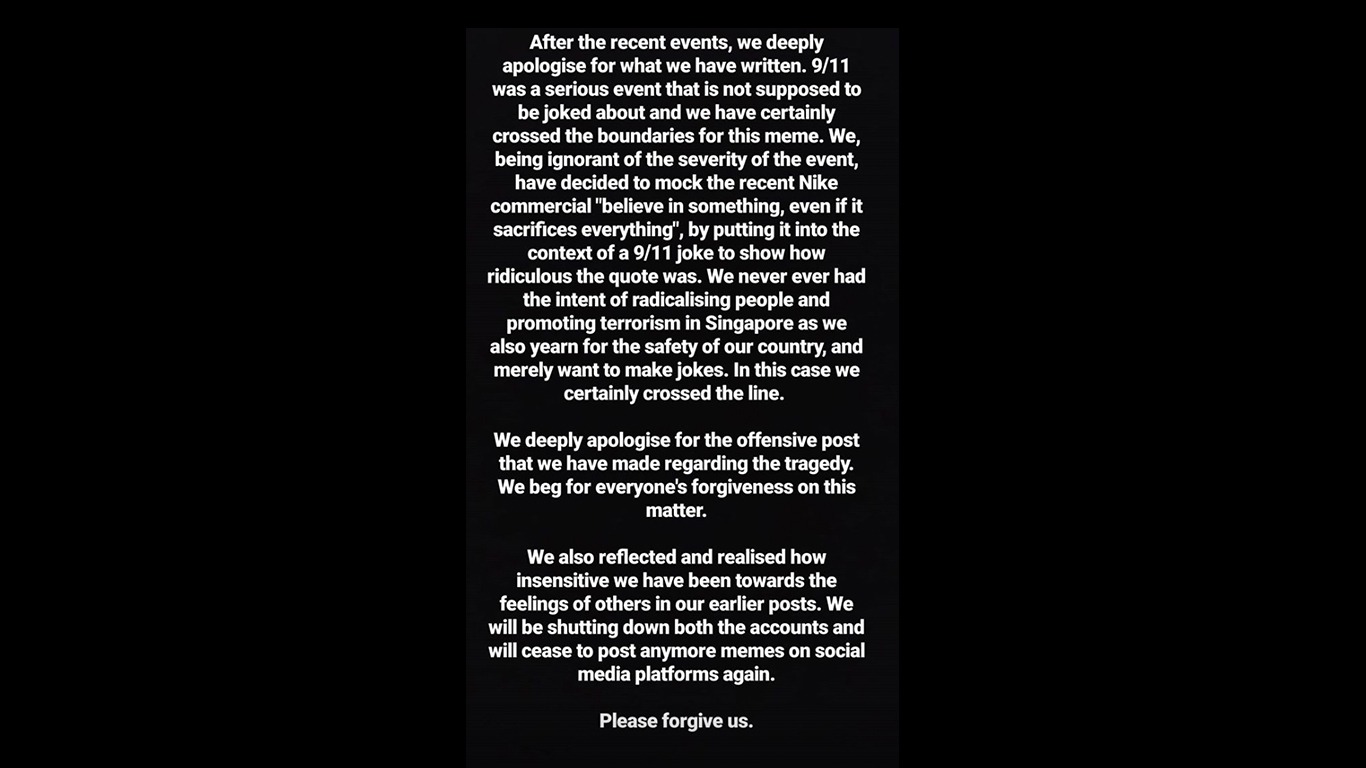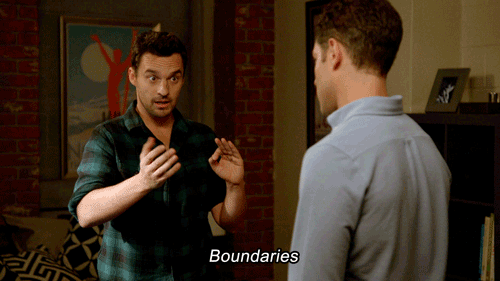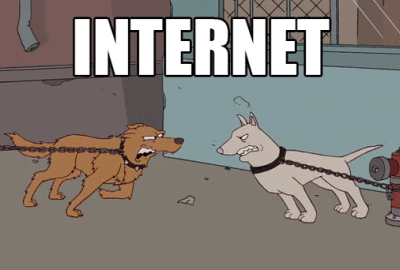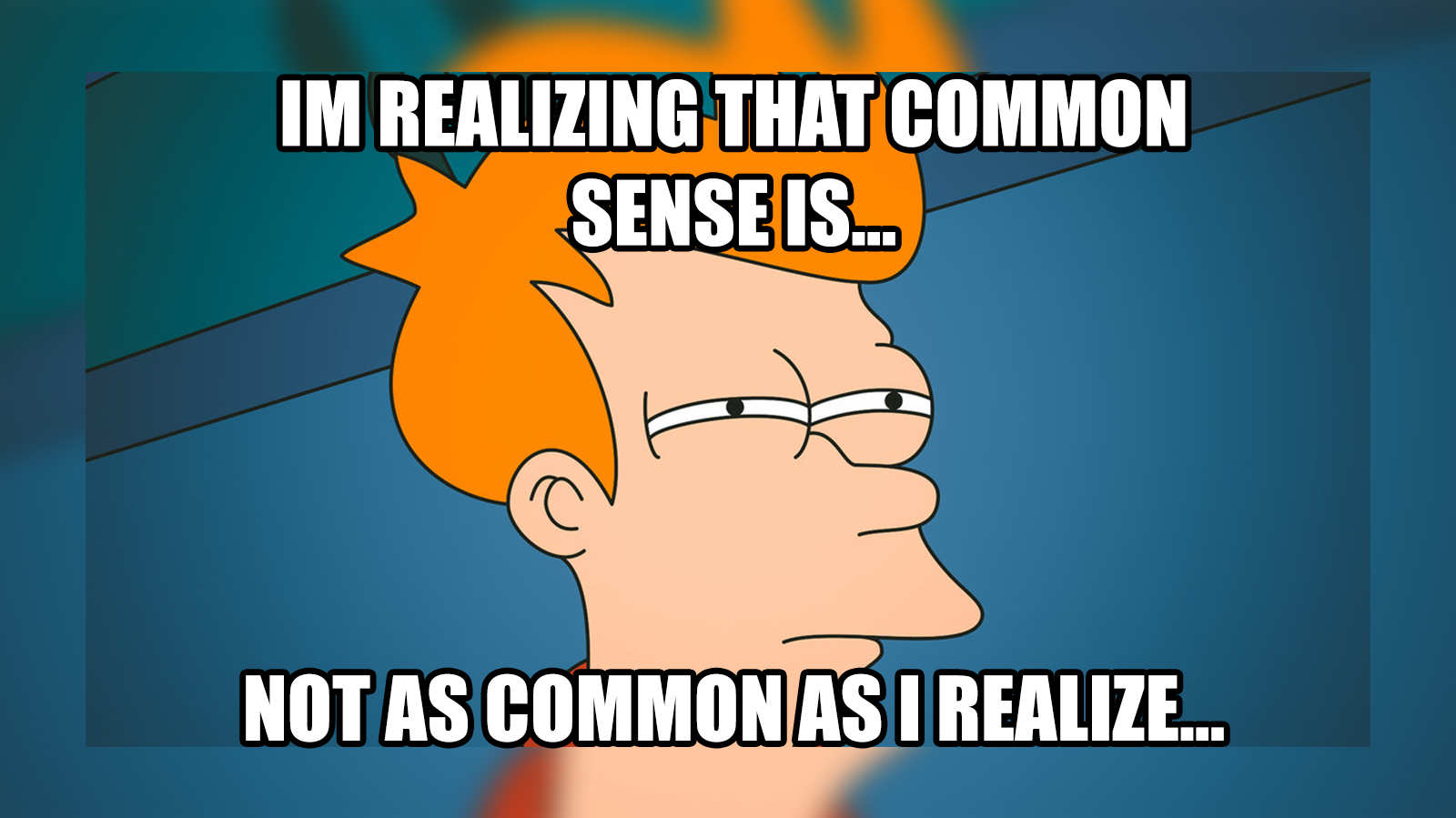Welcome to the Internet in 2018.
It is a brave new world ruled by cat gifs and Kim Jong Un memes, and one where pop culture is a language in itself.
While much of this is typically posted and shared in the spirit of good fun, however, one such meme created by a group of young Singaporeans recently came into prominence for the wrong reasons.
Other stories you might like







On Sept 11 this year, the anniversary of one of the most horrific terror events in modern history, a post was seen on a now-deleted Instagram account run by a group of Nanyang Junior College students that portrayed Osama Bin Laden with a visual of the ruined World Trade Center.
It was accompanied with a line that read: “Believe in something. Even if it means sacrificing 3,000 lives and two steel towers.”
The post by the nyjcmememachine account was created as a meme that spoofed a well-known Nike ad featuring American athlete Colin Kaepernick, and it would appear that followers were in on the joke.
The account is, after all, one of several started by students in Singapore that thrive on meme culture, alongside other popular pages like SGAG and SMRT Feedback by The Vigilanteh.

Taken a face value, however, the post could be seen to be glorifying terrorism – which led a 23-year-old undergraduate to make a police report, citing national security concerns.
And although the man’s questionable intentions and behaviour later came to light, his perspective was not completely without basis.
The NYJC students running the account eventually posted an apology after they were counselled by the school, acknowledging that they had been “ignorant of the severity of the (Sept 11) event”.

And in a surprising twist, SMRT Feedback by The Vigilanteh also stated their support for the police report in response to followers asking them to target the undergraduate, as they felt that the post on its own could easily have been used by terror groups to radicalise individuals.
In all, although many netizens roundly felt that involving the police was excessive, they also saw that the post was done in poor taste.
Countless sh*tposts – posts created with the intention to troll, insult or be ironic – are created and shared without much incident each day.
Yet, this one clearly ruffled feathers.

It highlights the fine line that exists between spreading harmless fun and creating offence, a threshold that even meme pages are expected not to cross.
In the students’ case, the post triggered national security concerns, and if the intention was humour, no one was laughing.
While posting in a personal capacity may not be quite the same as running a platform that’s open to the masses, there is a broader takeaway here that applies to individuals too.
By and large, no one is exempt from the expectations of decency and sensitivity, so if you’re going to put something up online, be prepared to own it.
Platforms like Facebook and Instagram, while great for communication and self-expression, have made it too easy to say and post what we want without considering the weight of our words, and how they affect others.
Being careless in making hurtful or offensive remarks may lead to disagreements, and even cyberbullying incidents, something that three in four children and teenagers in Singapore say they have been victims of.

In other cases, it has fanned the flames of racism online, as seen in the case of two women who were warned by the authorities earlier this year for complaining online that people from one race in Singapore looked down on those of another.
The Internet may make it easy to hide behind a screen, but there’s no reason to leave common sense behind.
For taste may be subjective and social media is a democratic platform where people should have the freedom to say whatever they want, but when it comes to who bears responsibility when things go wrong, the answer is clear-cut.
Consider it from this perspective: If you’re creating a meme, a sh*tpost or even a video for a post and putting it up on social media, would you be comfortable enough to share it with a packed auditorium and put your name to the message it conveys?
